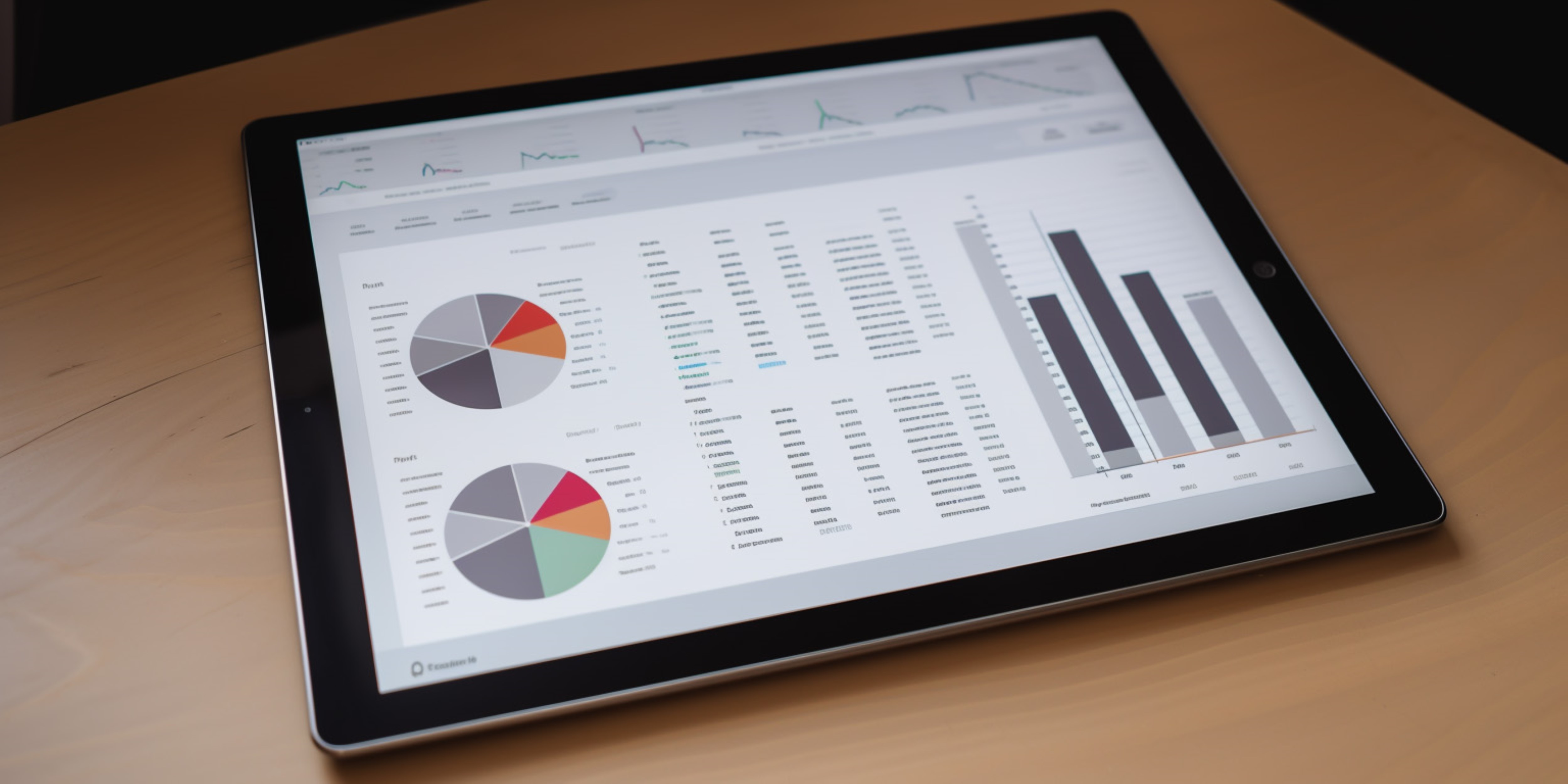Why real-time analytics is a game-changer for modern businesses?


Book a free consultation now!
Business moves fast – and if you’re not keeping up, you’re falling behind. Real-time analytics gives companies the power to see what’s happening right now and act on it instantly. No waiting on end-of-day reports. No reacting too late.
So, what is real-time analytics? It’s the ability to analyze data as it’s generated – giving you real-time data insights that power smarter decisions, sharper responses, and stronger results. Whether it’s live data analytics guiding a pricing change, or real-time predictive analytics flagging customer churn before it happens, the payoff is clear: speed and clarity.
Real-time data analytics turns information into immediate action. And in a world where conditions change by the minute, that’s not just helpful – it’s essential.
In this article, we’ll explore how real-time business analytics drives agility, improves customer experience, and gives companies a serious edge.
Real-time insights: from static reports to live decisions
Real-time analytics has completely changed how modern businesses make decisions. Instead of relying on outdated reports or gut instinct, teams now act on real-time data insights that reflect exactly what’s happening in the moment. That’s real-time analytics in action – transforming raw information into decisions that drive results now, not later.
Here’s how real-time analytics accelerates decisioning:
It offers instant visibility into changing conditions
When data flows in live, businesses don’t have to rely on assumptions or outdated reports. Real-time data analysis reveals performance issues, market shifts, or customer behavior changes as they happen.
Example: A logistics company uses real-time business analytics to track delivery routes. When a traffic jam or weather event disrupts a route, the system instantly reroutes drivers to avoid delays – preventing missed deadlines and improving customer satisfaction.
It allows for faster response to opportunities
Opportunities don’t wait. Real-time reporting analytics lets businesses spot and seize them while they’re still relevant.
Example: An e-commerce retailer sees a spike in demand for a product during a flash sale. Using live data analytics, the marketing team increases ad spend on the fly and shifts inventory from low-performing SKUs to the trending item – maximizing revenue in real time.
It helps to proactively mitigate risks
Real-time predictive analytics enables organizations to forecast problems before they happen. That kind of foresight leads to faster, preventative action – instead of slow, reactive damage control.
Example: A subscription service monitors real-time customer engagement data. When a user shows signs of churn (declining activity, support issues), the system flags it immediately. A customer success rep reaches out with a personalized offer, saving the relationship.
It empowers teams, and decentralizes decisions
With real-time data analytics, frontline employees no longer wait for management to interpret the numbers. They have access to live KPI dashboards and real-time insights that let them make smart decisions on the spot.
Example: A retail store manager sees foot traffic drop mid-afternoon. With access to real-time analytics, they quickly shift staffing levels, launch a limited-time promo, and adjust floor displays – all within the same day.
Real-time analytics speeds up decision-making by delivering the information leaders need exactly when they need it. Instead of waiting for end-of-day, weekly, or monthly reports, executives and teams get real-time data insights that reflect what’s happening in the moment – allowing them to act quickly and with confidence.
Real-time predictive analytics: anticipate what’s next before others do
Real-time analytics doesn’t just tell you what’s happening now – it helps you see what’s coming next. That’s the power of real-time predictive analytics. When you combine real-time data analysis with machine learning and AI, you don’t just react faster – you act smarter.
Think of it this way: real-time data analytics gives you immediate visibility, but predictive models take it a step further. They analyze live data streams to forecast trends, uncover patterns, and surface early warning signs. Whether you’re trying to forecast demand, reduce customer churn, or optimize staffing, real-time predictive analytics helps you make proactive decisions with confidence.
Here’s how real-time predictive analytics improves outcomes:
It helps to anticipate demand with precision
Real-time data analysis doesn’t just show you what’s happening now – it identifies patterns that point to what will happen next. That means you can forecast demand more accurately and adjust resources accordingly.
Example: Netflix content steering – the platform analyzes in real time what content the user is watching, how long, and when they pause. The ML model classifies preferences in <50ms and customizes the homepage and suggests the next movie. When the user skips the intro 3 times in a row, the system automatically enables “skip intro” for similar series.
It enables optimizing inventory and supply chains
With predictive insights based on live data, businesses can reduce overstock and avoid stockouts – saving money and improving service levels.
Example: A food distributor tracks real-time sales and shipment data across multiple locations. Predictive models forecast which products will run low in specific regions based on consumption trends and local events. The team redirects supply before any shortages occur, keeping operations smooth and customers happy.
It means smarter staffing and resource allocation
Real-time analytics helps companies staff smarter – aligning labor with anticipated demand instead of historical averages.
Example: Uber surge pricing – the system analyzes the number of available drivers and requests in each district in real time. The pricing algorithm reacts in seconds, so when demand exceeds supply by 30%, the price automatically increases by 1.2x. Passengers see current prices in the app, and drivers receive notifications about high-profit zones.
It helps to improve marketing performance
Predictive analytics powered by live data identifies shifts in customer behavior and campaign performance – enabling rapid adjustments that boost ROI.
Example: A subscription service tracks real-time engagement data across email, web, and app usage. When predictive models detect early signs of disengagement, the system automatically triggers personalized offers or reminders, increasing retention and lifetime value.
In fast-moving industries, that level of foresight gives you a serious edge. Real-time data analytics doesn’t just help you make better decisions – it helps you make them before your competitors even see the problem coming.
Operational efficiency boost: real-time analytics in action
Real-time analytics isn’t just for dashboards and executives – it lives inside the day-to-day work that keeps your business running. When you put real-time data analytics to work across operations and customer touchpoints, you don’t just gain insight – you create impact.
Here’s how real-time analytics drives efficiency:
It allows to spot inefficiencies as they happen
With real-time data analytics, businesses can track inventory levels, production lines, logistics, and workflows second by second. When something slows down, breaks, or drifts off target, real-time insights highlight the issue immediately – not hours or days later.
Example: Amazon warehouse optimization – the system tracks employee movements, robot locations, and order queues in real time. When it detects that one zone is slowing down (e.g., due to a lack of staff), it automatically redirects tasks to zones with greater capacity and sends an alert to the supervisor. Orders are fulfilled without delay.
It reduces waste and minimizes downtime
Real-time reporting analytics helps operations teams adjust on the fly. Whether it’s rerouting shipments, reallocating resources, or pausing underperforming processes, businesses can act instantly to avoid losses.
Example: A warehouse uses real-time business analytics to track order fulfillment. When the system detects a slowdown in one zone due to a staffing issue, it shifts tasks to nearby zones with more capacity. The operation continues without disruption, and customer orders stay on schedule.
It improves cross-team coordination
Live dashboards powered by real-time data analysis keep every team aligned. When everyone shares the same up-to-the-minute view of what’s happening, decisions are quicker, communication is clearer, and collaboration improves.
Example: A retail chain tracks sales, staffing, and inventory across multiple locations. Store managers, regional leads, and supply chain teams all access the same real-time data insights. They can respond together – adjusting pricing, updating displays, and rebalancing inventory without delay.
Operational efficiency isn’t just about saving time or cutting costs – it’s about building a system that moves at the speed of your business. Real-time analytics makes that possible. With constant visibility, smart alerts, and live collaboration, you turn every workflow into an opportunity to improve. And in fast-paced industries, that kind of agility creates a lasting advantage.
Real-time data insights turn business intelligence into business agility. You’re not just collecting data – you’re using it, live and in context, to run smoother operations and deliver better customer experiences. That’s the difference between being data-informed and truly data-driven.
Real-time analytics improves operational efficiency by turning constant data flow into instant insight. Teams can monitor processes, resources, and performance as they happen – which means they don’t waste time chasing problems after the fact. Instead, they fix issues right away, optimize in real time, and keep operations running smoothly.
Better customer experience: taking advantage of live data analytics
Real-time analytics takes customer experience from reactive to responsive – and from good to exceptional. When businesses tap into live data analytics, they gain the ability to understand, engage, and support customers in the exact moment it matters most. That kind of real-time insight turns every interaction into an opportunity to build loyalty and stand out from the competition.
Here’s how real-time analytics boosts customer experience:
It enables personalizing interactions in the moment
Real-time data analytics gives businesses a live view of customer behavior, preferences, and activity. With that information, teams can tailor messages, offers, and experiences instantly – not hours or days later.
Example: An online retailer tracks user clicks, browsing patterns, and purchase history in real time. When a returning customer shows interest in a specific product category, the site dynamically updates the homepage to highlight relevant items and offers. That immediate personalization increases engagement and conversion.
It helps resolve issues faster
Real-time reporting analytics allows support teams to spot problems as soon as they occur – often before the customer even reaches out. This means faster, more informed responses and fewer frustrating handoffs.
Example: A telecom provider uses real-time data analysis to monitor service interruptions and user complaints. When the system detects a spike in dropped calls in a specific region, support teams are alerted instantly. They proactively reach out to affected users with updates and compensation options, resolving the issue before it escalates.
It allows for proactive service delivery
Real-time predictive analytics enables businesses to anticipate customer needs and take action before issues arise. Whether it’s preventing churn, surfacing recommendations, or guiding next-best actions, proactive service creates a smoother, more satisfying experience.
Example: A SaaS company monitors user activity through live data analytics. When a customer’s usage patterns suggest they’re struggling with a new feature, a success manager is notified and reaches out with tips and training resources. This early intervention reduces frustration and increases product adoption.
Adapting in real time to customer sentiment
Customer expectations can change quickly – especially in high-touch industries. Real-time sentiment analysis gives teams a live pulse on how customers feel, helping them adjust tone, messaging, or offers on the fly.
Example: A hospitality brand uses real-time business analytics to track guest feedback during hotel stays. If a guest leaves a negative comment mid-stay, staff receive an immediate alert and address the concern directly – often turning a bad experience into a positive review.
Real-time data insights empower businesses to respond with speed, empathy, and precision – creating experiences that feel thoughtful and timely. In a world where every second counts, real-time analytics helps you meet expectations, earn trust, and keep customers coming back.
Why real-time analytics is no longer optional – unlock this competitive advantage now
Real-time analytics is no longer just a tool – it’s a strategy. In a business environment where conditions shift daily (or hourly), real-time data analytics gives you the ability to move with confidence, clarity, and speed. Companies that embrace real-time business analytics don’t just keep up – they lead.
When you build real-time insights into your core operations, you unlock true business agility. You don’t wait for problems to escalate or opportunities to disappear. You make faster decisions, course-correct in the moment, and adapt your strategy based on what’s happening right now. That’s what real-time analytics means at the leadership level – better decisions, made sooner, with less guesswork.
This isn’t just about tools and dashboards. It’s about a shift in how your business operates. Real-time data analysis creates a culture of agility, where teams move with clarity and confidence. You stop guessing and start knowing – and that transforms everything from strategy to execution.
We’ve seen this transformation firsthand. As data consultants specializing in real-time analytics, we help organizations design the infrastructure, pipelines, and systems that turn raw data into live intelligence. When businesses understand real-time analytics and apply it across every layer – from strategy to operations – they become more agile, more competitive, and better prepared for whatever comes next.
Still wondering how to make real-time analytics work for your business? Start with the basics: strong data pipelines, accessible live dashboards, and clear operational use cases. Then scale. Whether you're building out your first real-time reporting analytics system or looking to enhance an existing one, the potential impact is huge.
We help companies do exactly that. With deep expertise in data strategy, engineering, and real-time analytics architecture, we build systems that deliver real-time insights where and when they matter most.
In today’s fast-moving environment, reacting late isn’t an option. Real-time analytics gives you the tools to lead – not follow. Contact us today to learn more.


